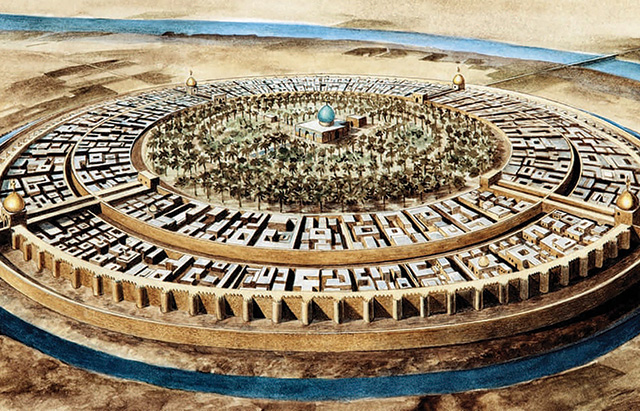Baghdad: what were its connections across the medieval world?
Primary History article

Baghdad of the Abbasid Caliphate was an architectural marvel, a round city protected by huge walls and surrounded by an intricate canal system. At the centre lay the caliph’s palace with a cupola of green, and the Great Mosque. The city was a series of concentric circles. The surrounding walls were over 240 metres high crowned with battlements and encircled by a deep moat. The city walls were made of bricks interlaced with reed bundles as were the buildings inside the city. Four equidistant gates opened onto four avenues that led straight to the heart of the city. Huge gatehouses guarded the city. They looked out over palm groves, fields, canals and bridges made of boats tied together and the growing suburbs in the west. Al Mansur was the caliph who designed and created the city. It is said that he liked to look out of the Khorasan gatehouse towards the river Tigris, in the afternoon when the sun was hot...
This resource is FREE for Primary HA Members.
Non HA Members can get instant access for £2.49


